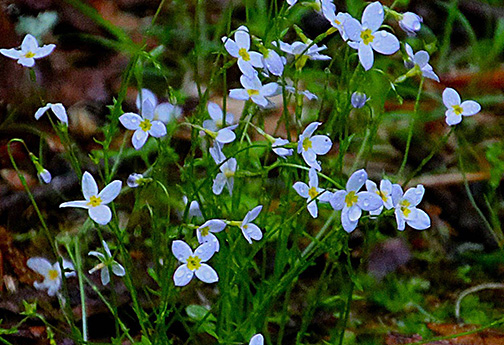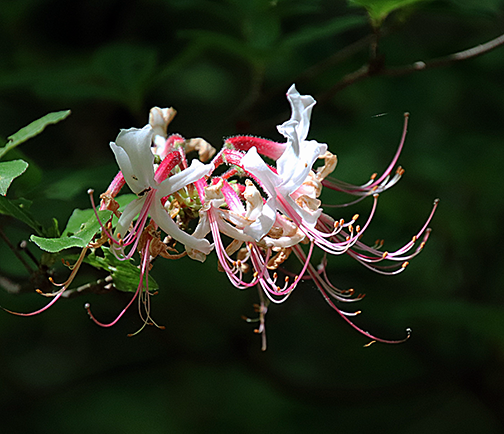Happy Mystery Monday! Can you guess what is pictured below?

The answer to last week’s mystery is bluets, Houstonia caerulea, pictured below.

Bluets are native to eastern North America. They are a small, delicate, perennial plant that grows in tufts with tiny, pale blue flowers with yellow centers. Some bluet flowers are almost white, while others are a rich, dark blue.
Bluets mature in mid-Spring and continue into mid-Summer. At just 6″ tall, common bluets are very light and airy. They are found in moist, partially shaded areas like deciduous woods, meadows, and clearings. The vegetation consists of a basal roseate that stays on the ground, and a few small leaves along the thin, green stems that emerge from the basal roseate.
The flowers are very small and appear to almost float above the ground because their stems are so thin. Bluets produce both nectar and pollen. Their short flower tubes make their nectar accessible to short-tongued native bees. Several smaller species of early butterflies visit common bluets, and bluets serve as a host plant for the larvae of the spotted thyris moth, Thyris maculata.
An alternate name for bluets is Quaker ladies, because their shape is similar to the hats and dresses once worn by women of the Quaker faith.
Mystery Monday is sponsored by the Spy Newspapers and Adkins Arboretum.



Mary Ann Brown says
Having viewed the photo, I think the flower is called, Japanese Honeysuckle. It is a beautiful climber. The coral-pink and white coloring makes it a dainty-looking flower.